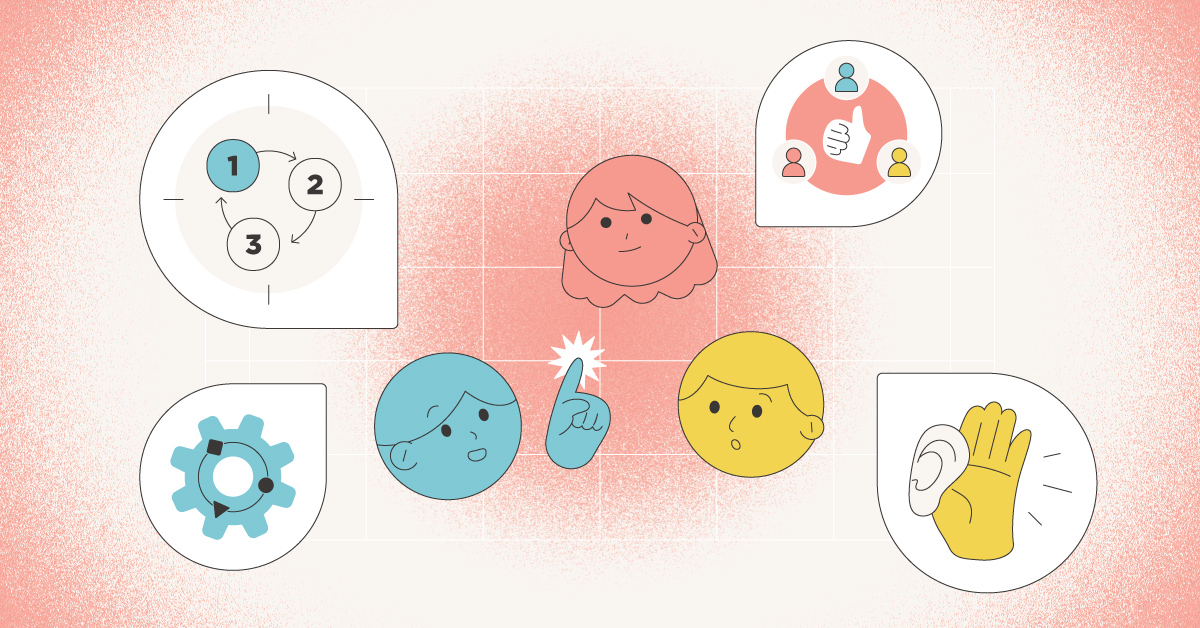
What Is The 12 Driving Forces Assessment?
Finding the right kind of skill assessment for your organization can transform engagement and productivity. If you want to know more One of those assessments is The 12 Driving Forces.
The 12 Driving Forces is an assessment that measures why a person does what they do. It measures the motivation (and strength) behind behaviors, using 6 different motivators.
Those motivators are...
- Knowledge
- Utility
- Surroundings
- Others
- Power
- Methodologies
These 6 motivators are each divided into two distinct sides, measuring each factor. Based on a continuum, these 12 drivers make up a person’s cluster of Driving Forces.
Read more about the basics of The 12 Driving Forces here.
How is Power Defined in The 12 Driving Forces?
The focus of the Individualistic motivator continuum is power — specifically how a person values individuality, status, renown, and personal influence. The two ends of this continuum are Collaborative and Commanding.
It can be complicated to try to understand a concept as abstract as power, so let’s break it down and dig into both sides of this spectrum.
What Does Collaborative Mean in The 12 Driving Forces Assessment?
Collaborative people are driven by being in a supporting role and contributing with little need for individual recognition. They focus on their contribution versus advancing their position and enjoy working behind the scenes and getting things done.
If you’re looking for a team player, look no further than a Collaborative driver! They thrive when working closely with others and love contributing to a mutual goal, tending to set aside their own agenda for the good of the company or community they serve.
Collaborative people need to look out for their own ability to ‘go with the flow’. This is helpful sometimes but can also be detrimental if the current direction of a project or initiative needs to change. Collaborative people can lack the initiative to share ideas that contradict the current direction or path and, in extreme situations, can follow a leader or cause even to their own detriment.
What Do Collaborative People Need in the Workplace?
One of the things that will undoubtedly lead to stress in your Collaborative coworker’s day-to-day is setting an expectation for public recognition. Collaborative people are not motivated by receiving praise in front of others; they prefer to thrive behind the scenes. If their leaders are not careful, this preference can mean that Collaborative people get overlooked for their achievements.
Avoid this by demonstrating your support for them personally. Praise them in private, create channels for collaborative forms of feedback like a dedicated channel on your chat service for recognition, and make sure their accomplishments are recognized in ways that make them feel accomplished. If you’re not sure what those are, just ask!
Collaborative people also do their best work in group environments. Make sure to provide opportunities for discussions and brainstorming; this will help your Collaborative team members open up and put themselves out there in a way that feels comfortable and productive to them.
What Does Commanding Mean in The 12 Driving Forces Assessment?

Commanding people value status and public recognition and they assert control over their freedom and destiny. They are driven to create winning strategies and are passionate about creating an enduring legacy through their work.
If someone is Commanding, that doesn’t necessarily mean they are aggressive or direct in the workplace. It simply means that they want a hand in creating their own path forward and prefer to take on roles that receive recognition.
People with a Commanding driver often end up as the “go-to” person for those around them, regardless of the problem at hand. They like operating with a plan and aren’t afraid to take charge if a situation needs a leader.
What Do Commanding People Need in the Workplace?
Commanding people need public recognition for their work. It’s very important for them to feel seen for their achievements. This doesn’t mean that they want a parade every time they complete a task, but it does mean that they will thrive in a work environment that celebrates individual accomplishments and not just team ones.
If someone is Commanding, they also want to be in an environment where they have opportunities to advance. Staying in the same role without the ability to prove themselves or expand their influence will feel like a slow death to Commanding people. Create opportunities for them to shine and they will!
Another thing to remember is that Commanding people won’t thrive if their positions are not respected. Getting a Commanding person’s title wrong puts them on the fast path to disengagement because it speaks to a lack of respect for the work they do. Make sure to highlight your Commanding team members and make it clear to them that they matter and their work matters.
Collaborative Drivers, Commanding Drivers, And You
Understanding Collaborative drivers and Commanding drivers will help you interact more positively with your team. Strengthen your team’s understanding of Power and look at both ends of the spectrum to improve engagement in your team.
If you want to harness the power of The 12 Driving Forces for your team, TTI SI can help. Contact us here to get started revealing human potential.




